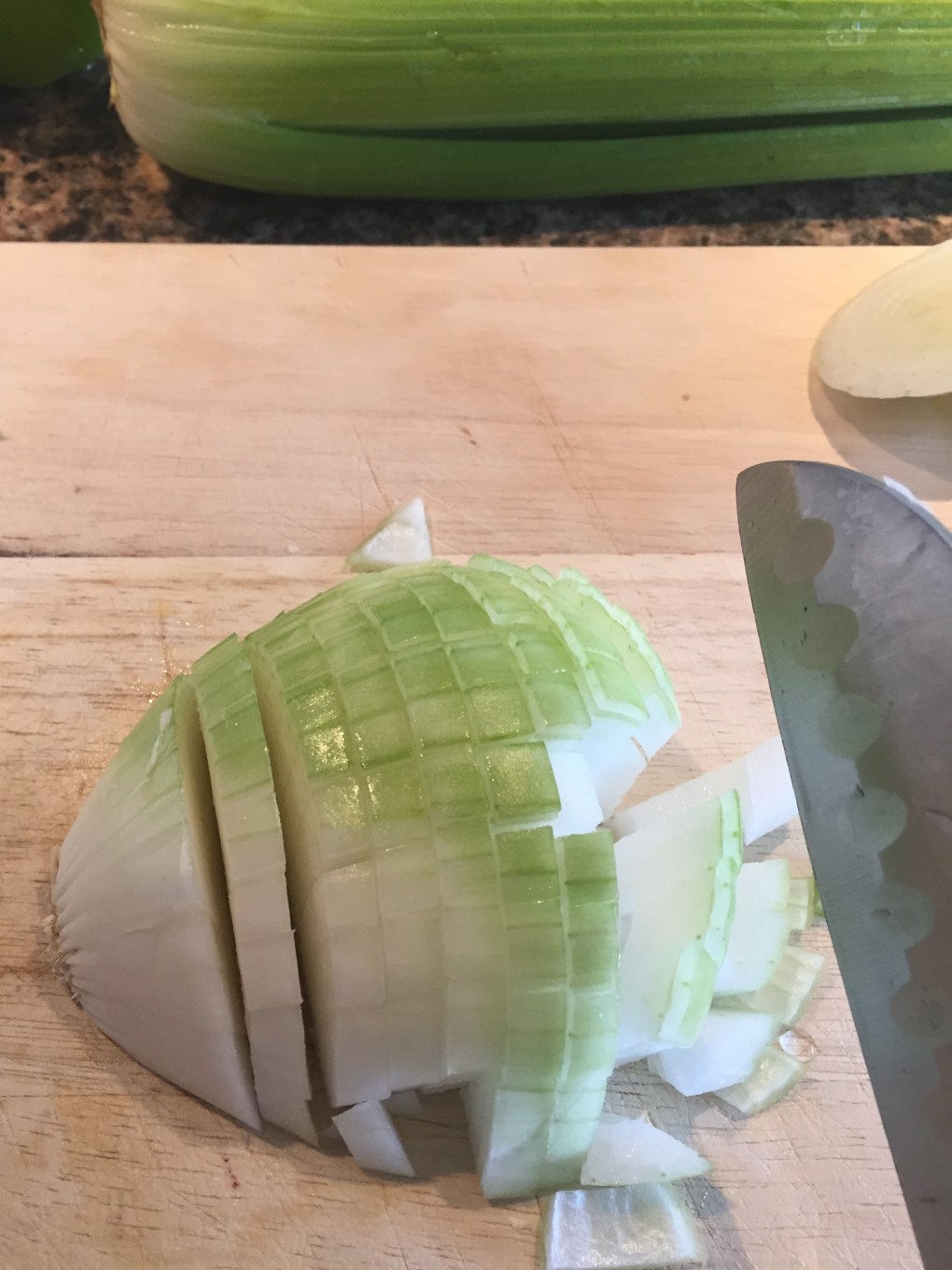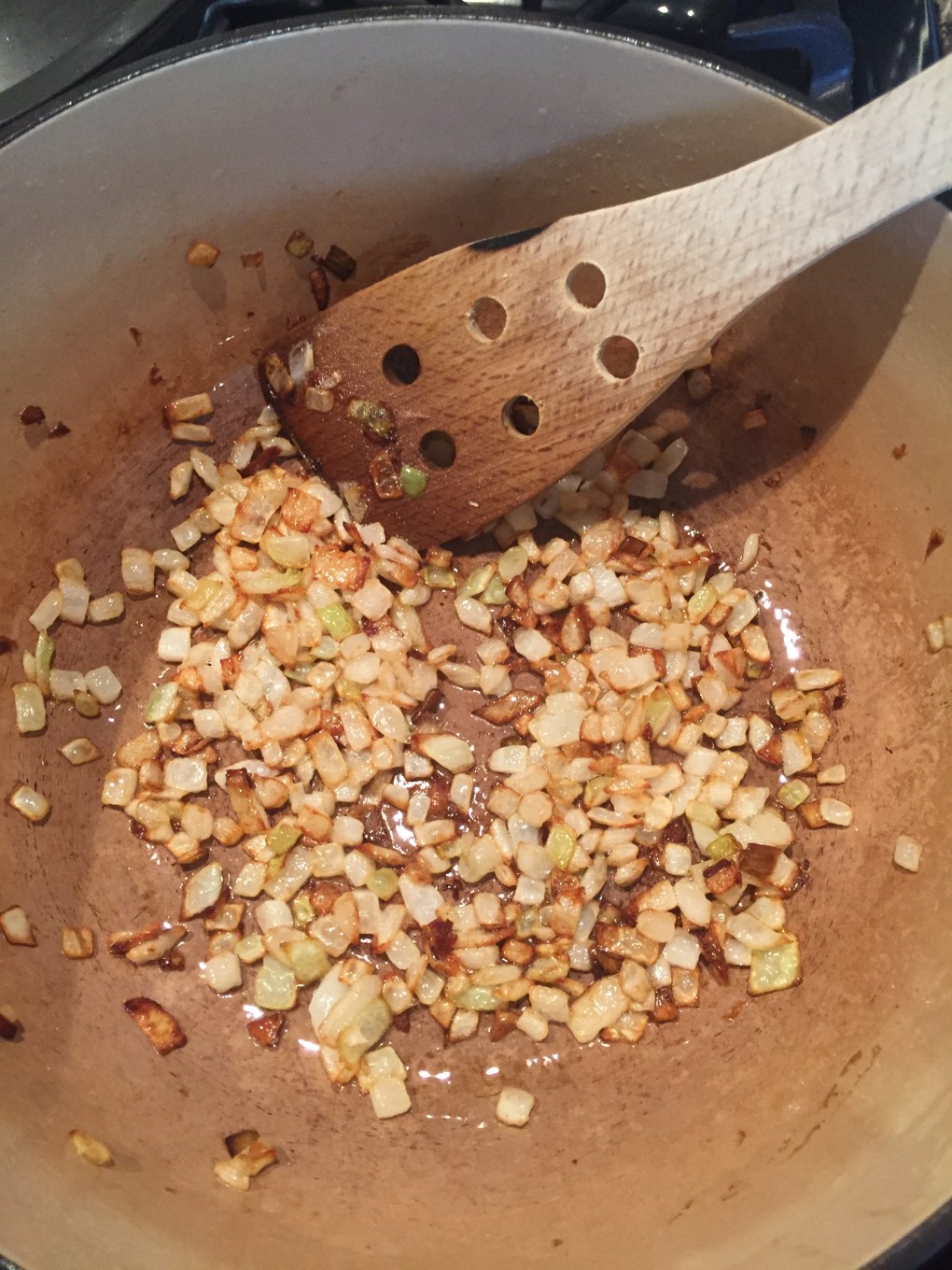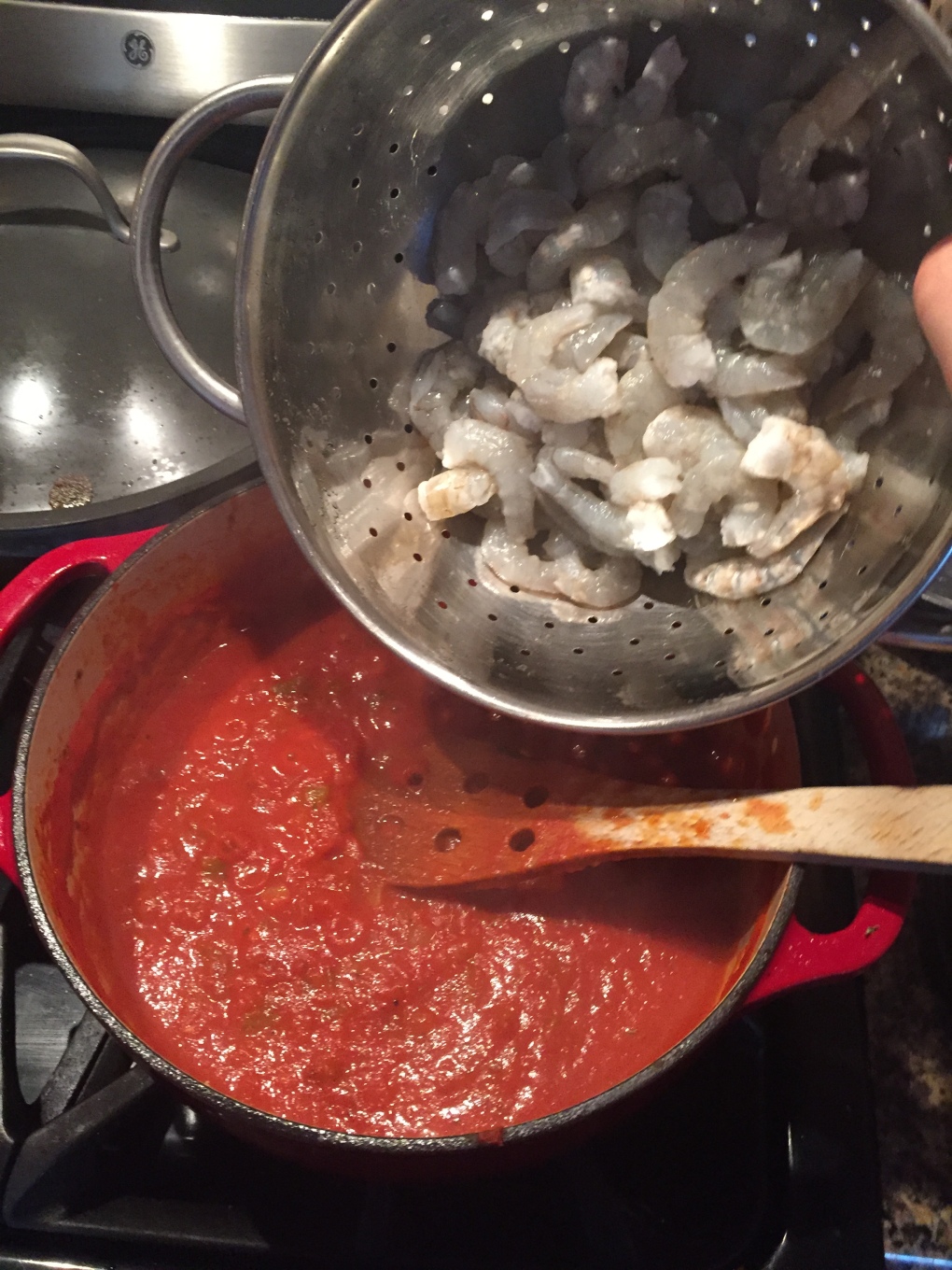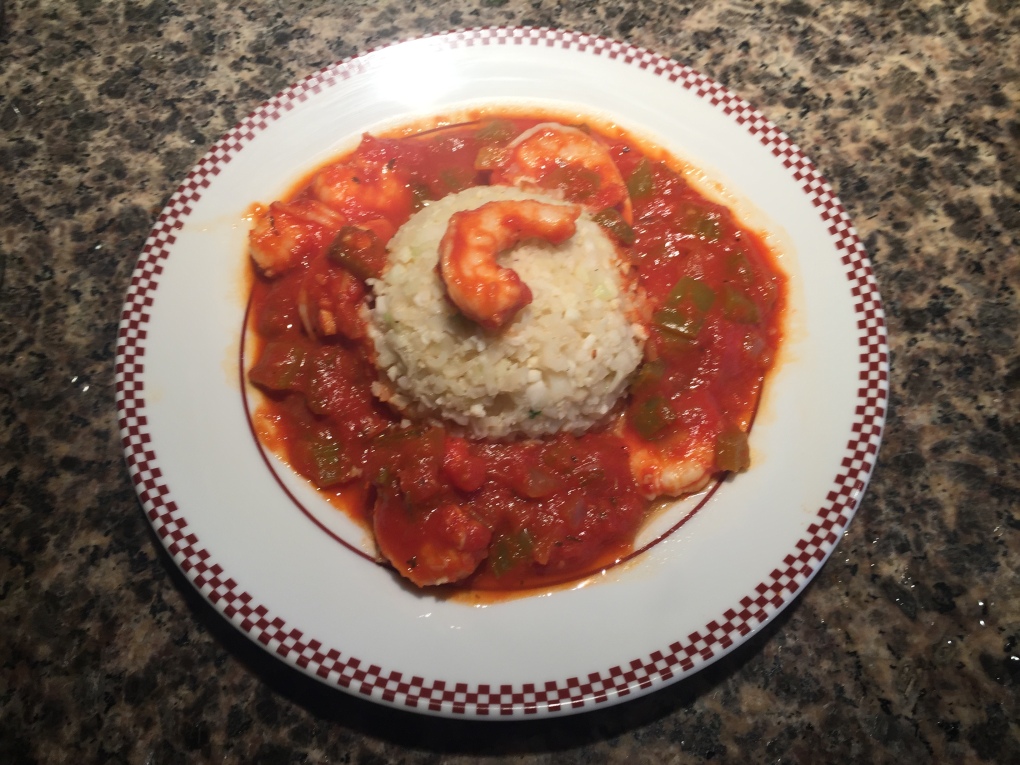Hello Friends!
Let’s get cooking! First up, a Louisiana classic – Shrimp Creole.
This recipe is inspired by the late, great Paul Prudhomme and adapted from his classic cookbook, Chef Paul Prudhomme’s Louisiana Kitchen. This cookbook harkens from a simpler, more innocent time when a recipe could call for a stick of butter and half a cup of lard without nary a concern for the HDL cholesterol levels of the reader and his or her family. While butter always makes things richer, sometimes a little goes a long way, and here I think just a tablespoon is just fine. The flavor comes from browned vegetables, shrimp stock and of course lots of Cajun/Creole herb and spices!
The best tip I can give you is to taste the sauce before you add the shrimp to be sure it is to your liking. Adjust with salt, sugar, pepper – even an extra dash of Tabasco if you like. This is not a subtle dish – I like it super spicy, but this is (for me) medium spicy.
Here are the ingredients:
- 1 ½ pounds of shrimp tails – raw AND shell on – preferably deveined
- 1 large onion or 2 medium onions, finely diced
- 4 ribs celery, finely diced
- 1 green bell pepper, finely diced
- 2 cloves garlic, minced
- 2 teaspoons salt
- 1 teaspoon cayenne pepper
- 1 ½ teaspoons white pepper
- ½ teaspoon ground black pepper
- 1 bay leaf
- 1 tablespoon butter
- 1 teaspoon hot sauce (Tabasco, etc.) – optional
- 1 tablespoon dried THYME
- ½ tablespoon dried basil
- 1 28-oz can crushed tomatoes
- 1 tablespoon tomato paste
- 1-2 teaspoons sugar (to taste)
The nice thing about this recipe is that you probably have most of the ingredients handy. Nothing exotic here.
Equipment: large, deep skillet or a Dutch oven, and a medium stock pot or large sauce pan
Steps:
- Peel and devein your shrimp. Keep the shells and rinse them well. Put the shells in your stock pot or sauce pan with trimmings from the celery and onion (not the green pepper), one clove garlic and 1 teaspoon salt. Add a quart of water and bring to boil on high heat. Then let simmer on low while you cook the rest. This is your SHRIMP STOCK. Let it reduce by about half – do not dilute it unless it gets dry – the goal is about two cups of concentrated, shrimpy goodness (Note: this is even better with head-on shrimp)
- Heat 1-2 tablespoons of oil in your Dutch oven on medium-high heat. When hot, add half the diced onions and cook, stirring frequently (but not continuously) until browned – usually 5-7 minutes. (See photo below)
- Add remaining onions, celery and green peppers sauté until tender, usually about 5 minutes.
- Add the garlic. Add salt, cayenne, white pepper, black pepper and bay leaf. Add the butter too. Sauté that for 1-2 minutes.
- Add the hot sauce (if using) and the thyme and basil. Stir constantly for 1-2 minutes so it doesn’t burn.
- Add a ladle or two of the SHRIMP STOCK that you’ve been making and stir. Be sure to SCRAPE the bottom to loosen the browned bits on the bottom. Cook for 1-2 minutes.
- Now add the tomatoes and sugar and stir well. Reduce the heat to medium-low once the tomatoes are bubbling. Add tomato paste and stir. Cook uncovered for at least 15 minutes.
- Add two cups of your nice, rich SHRIMP STOCK. Cook for 10 minutes more – and it’s more than fine to keep cooking on low heat for longer if you need to. The goal is to concentrate the flavor. TASTE and ADJUST for seasonings (salt, pepper, sugar, butter)
- When ready to serve, add the SHRIMP, stir, cover, and turn off the heat. The shrimp should be done in about 5 minutes – do not leave longer than 7-8 minutes.
- Serve over rice (or your favorite grain or starch – like cauliflower rice, shown below)
OK, let’s look at what’s involved in some of the steps. Some of these may be basic for you, but hopefully there are some useful tips here!
Dicing onions:
- Cut off the top then cut the onion lengthwise in half from the base to the cut top end.
- Peel the onion.
- Score each half of the onion lengthwise by cutting through about ¾ inches short of the base (see photo). If you’re careful not to cut too far, you can reduce the number of tears this process can produce.
- Cut across the onion crosswise so you get a fine dice. Voila!


Mincing garlic:
You can always use a garlic press – I like that for thing like salad dressings or other times where the garlic won’t get cooked down. But for a nice stress release, try smashing the clove (skin on) with the side of your chef’s knife like so.
The peel is easy to remove and mincing from here is a breeze.
Deveining shrimp:
It’s a pain, but once you get the hang of it and into a groove, you can fly through this. Best is to have a short knife, preferable one with a hooked end. And have a couple paper towels handy for disposing of the “veins.”

Step 2 – How do you know if the onions are done? They look like this or even browner (but NOT black):

Step 3 – How do you know if the onion, celery and green pepper (the “Holy Trinity” of Cajun/Creole cuisine) are soft? They look like this:

Step 9 looks like this – your sauce should look like this or even more concentrated:

And here is the final plating over a scoop of cauliflower rice (rice is better tasting, frankly, but we’re doing the low carb thing):

Serve with a dry white wine or rosé. Also awesome with beer, especially if you made it super spicy.
A few other notes:
- Shrimp cook fast, and overcooked, rubbery shrimp are just sad. Feel free to check on the shrimp after 5 minutes to be sure they are just cooked through but not tough. This makes such a difference with this dish. Consequently, it doesn’t heat up well once you’ve cooked the shrimp.
- Feel free to cook the stock longer – the longer, the better the flavor. Chef Paul’s recipe calls for adding the shrimp heads as well. This makes the stock much stronger in flavor and an intense orange color. Quite impressive.
- Do devein your shrimp (or get pre-deveined). The shrimp will taste bitter if the “vein” is in there. Don’t make me explain what the “vein” actually is.
- Browning the onions well is a key step to developing flavor.
- Feel free to add more butter – it just makes it richer, which is not a bad thing.
- Crushed tomatoes are the best for tomato sauces like this. I like them better than diced because they cook faster and have tomato sauce along for the ride. Try different brands to find one you like best. Muir Glen is a good one but can be pricy.
Good luck! Please let me know if this recipe works for you.
Up next – kung pao chicken!


